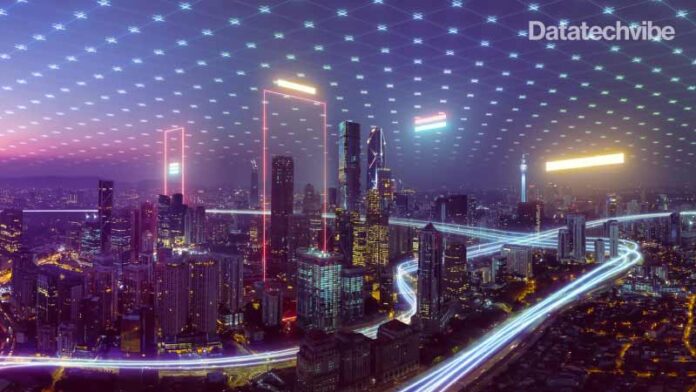In a world where everyday processes are changing so quickly, the impact of innovation has spurred the emergence of smart ecosystems where governance, transportation, logistics, maintenance, education, and healthcare are being automated in some way. The result has been the concept of smart cities, where information communication and technology (ICT) are merged with the existing infrastructure of a city which is then synchronised and managed using digital technology.
According to a UN report in 2018, 55 per cent of the world’s population lives in urban areas, and this number is expected to rise to 66 per cent by 2050. Overseeing the assets and operations of numerous large cities can be economical and efficient only if they are connected and automated – and this is the underlying principle of smart cities.
Also Read: IoT in the Middle East: Embracing the Technology
Here are the key enabling technologies that will pave the development of smart cities around the world as well as the challenges ahead.
- Internet of Things (IoT): Smart cities use IoT devices such as connected sensors, lights, and meters to data collection and analysis. Smart cities then utilise this data to enhance infrastructure, public utilities, and services, and much more. In smart buildings, for instance, IoT devices and solutions are helping property managers to be more efficient, sustainable and resilient, and therefore they are able to lower cost of operations and improve the lives of occupants.
- Artificial Intelligence (AI): AI is already making a great impact by making cities well-equipped with advanced features that make it more convenient for people to live, walk, shop and enjoy a safe life in such an environment. AI-enabled cameras and sensors can keep an eye on the surroundings to enhance the security level in the city’s neighbourhoods. Many smart cities around the world are also leveraging AI to control traffic density; sensors installed at parking lots, traffic signals and at intersections deploy AI to collect useful data for the authorities to plan their city initiatives more efficiently.
- 5G Connectivity: 5G is an important building block in creating modern, interconnected cities that provides comprehensive, reliable and fast internet that in turn will allow the exponentially generated data to be shared and consumed within a smart city infrastructure and beyond. 5G is expected to be up to 100 times faster than the present 4G systems, with up to 25 times lower latency (lag time) and as many as one million devices supported per square kilometre. This boost in bandwidth can bring many new possibilities, such as autonomous driving. The high-speed connectivity and computing capacity that 5G possesses can make smart cities more widespread, as governments around the world look towards embracing new technologies for smart city solutions.
Also Read: Cloud Is Taking The Middle East By Storm
Despite the growth of smart city solutions innovated by designers, engineers, and developers, there still remains a range of challenges that hinder the development of smart city projects.
- Custom ICT deployments: Many current ICT deployments for smart cities are based on custom systems that are not interoperable, portable across cities, extensible, or cost-effective. Additionally, a number of architectural design efforts are currently underway (e.g., IEEE, ITU, ISO/IEC and consortia) but have not yet come together, which is resulting in uncertainty among stakeholders.
- Data Issues: As an enormous amount of data needs to be constantly collated, analysed and shared, it requires a huge physical infrastructure to store this data, and more processing power as such, which in turn consumes a considerable amount of electricity and space and creates significant carbon emissions in doing so. Effective use of the large amounts of data that smart cities require demands extensive wireless coverage and fast transfer speeds, but the necessary infrastructure doesn’t typically exist in many parts of the world.
- Cyberthreats: There are an estimated 22 billion networked devices around the world and each of these devices serve as an entry point for malicious actors, with commonplace gadgets such as IP cameras and digital video recorders likely to face the biggest risk. 5G technology is secure by default and has several advanced capabilities for security, but that doesn’t mean security should be taken for granted. While the high-speed and low latency of 5G networks enable them to introduce new layers of connectivity, the subsequent surge in devices talking to each other is also an issue. Irrespective of their goals, every new connected device adds to the number of entry points in a network that can easily transform into a cybersecurity liability if not handled properly.
As many countries around the globe embrace digital transformation, smart cities are gradually becoming a reality. Some of the most innovative smart city projects are already serving as benchmarks for countries and governments with smart city aspirations.
However, building smart cities requires an environment that fosters the opportunities to utilise data, sensors and other smart devices to enhance operations. For instance, 5G on its own cannot stimulate the development of smart cities. Creating and maintaining smart cities needs massive investments, and adequate funding needs the cooperation of private and public entities on many levels.
*Talal Shaikh is the Associate Professor, Director of UG Studies at the School of Mathematical and Computer Sciences, Heriot-Watt University Dubai









